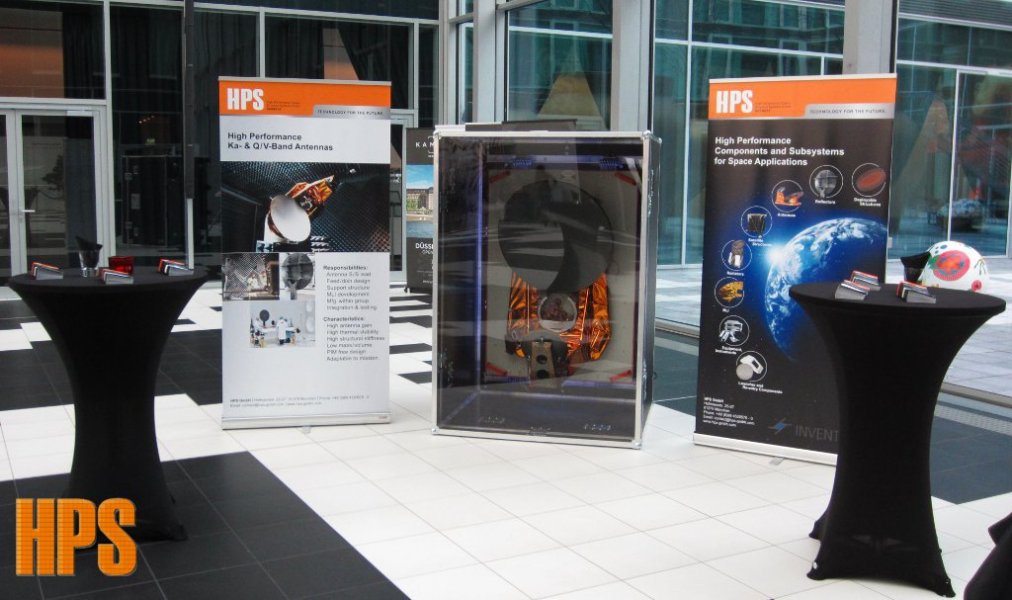July 2021
Spaceborne: ADEO-N2 Dragsail Testmission „Show me your Wings“ on Orbit
Falcon 9 rocket successfully deploys innovative technology to keep space sustainably clean
On Wednesday, June 30, at 21.31 hrs CEST a Falcon 9 by Space X took off to a transporter 2-mission from legendary spaceport Cape Canaveral, Florida. On board: Italian NewSpace company D-Orbit´s ION Satellite Carrier on its „Wild Ride“-mission with tech-passengers from 11 countries, among that HPS’s ADEO-N2, named „Show me your Wings“. ION was successfully separated from the launcher exactly one hour after liftoff.
The ION-platform itself will now seperate one payload after the other on their respective orbits for in-orbit validation tests, until finally the platform turns into a test object itself, since it will be brought back „home“ by ADEO, the world’s only industrial NewSpace drag sail of its kind for the multiple accelerated return of retired satellites. The idea behind it: „Just keep space „cleangreen“ by launching only what you have equipped with a device to bring it quickly back home after use“, says Ernst K. Pfeiffer, CEO of German spacetech company HPS. ADEO is available from HPS in different versions tailored to the size and weight of the spacecraft in question. In this case, it is one of the smallest versions, weighing just 800 grams, with dimensions of only 10x10x10 centimeters and a sail area of 3.6 square meters.
HPS CEO Ernst K. Pfeiffer is convinced that ADEO came at exactly the right time to promote sustainable NewSpace development by avoiding the threat of apocalyptic space debris scenarios, despite rapidly growing constellations. In this context, Pfeiffer emphasizes the excellent R&D support provided by engineers and test facilities of the DLR Institute of Space Systems in Bremen, as well as the various economic development support contracts and grants provided by ESA, DLR and the Free State of Bavaria.
The implementation of the technology developed by HPS’s NewSpace Team at Munich headquarters was largely supported by the hands of engineers and technicians of the Romanian subsidiary and Romanian workshops. This is now, according to Pfeiffer, „our clear advantage having all in one company: heritage from institutional space, a tailored „internal start-up department“, a steadily growing house in Bucharest and several trustful development and production partners. New and expanded challenges to innovation and manufacturing are already waiting.“
At the end of the nominal ION-mission, in front of its “eyes” of the integrated cameras, the ADEO braking sail module unfolds, shows its „wings“ and leads ION to residue-free disposal by incineration in the atmosphere much quicker than without the sail. The first 100 km of descent will be monitored intensively. This is planned to happen in a mission slot between December ´21 and January ´22. This mission now is the last verification in a series that also encompasses a first flight on Rocket Lab´s Electron in 2018 and several parabolic flights until 2021.
With this inflight-proof of maturity ADEO is targeted to go then into serial production for customers already waiting in the U.S., Europe and Asia.
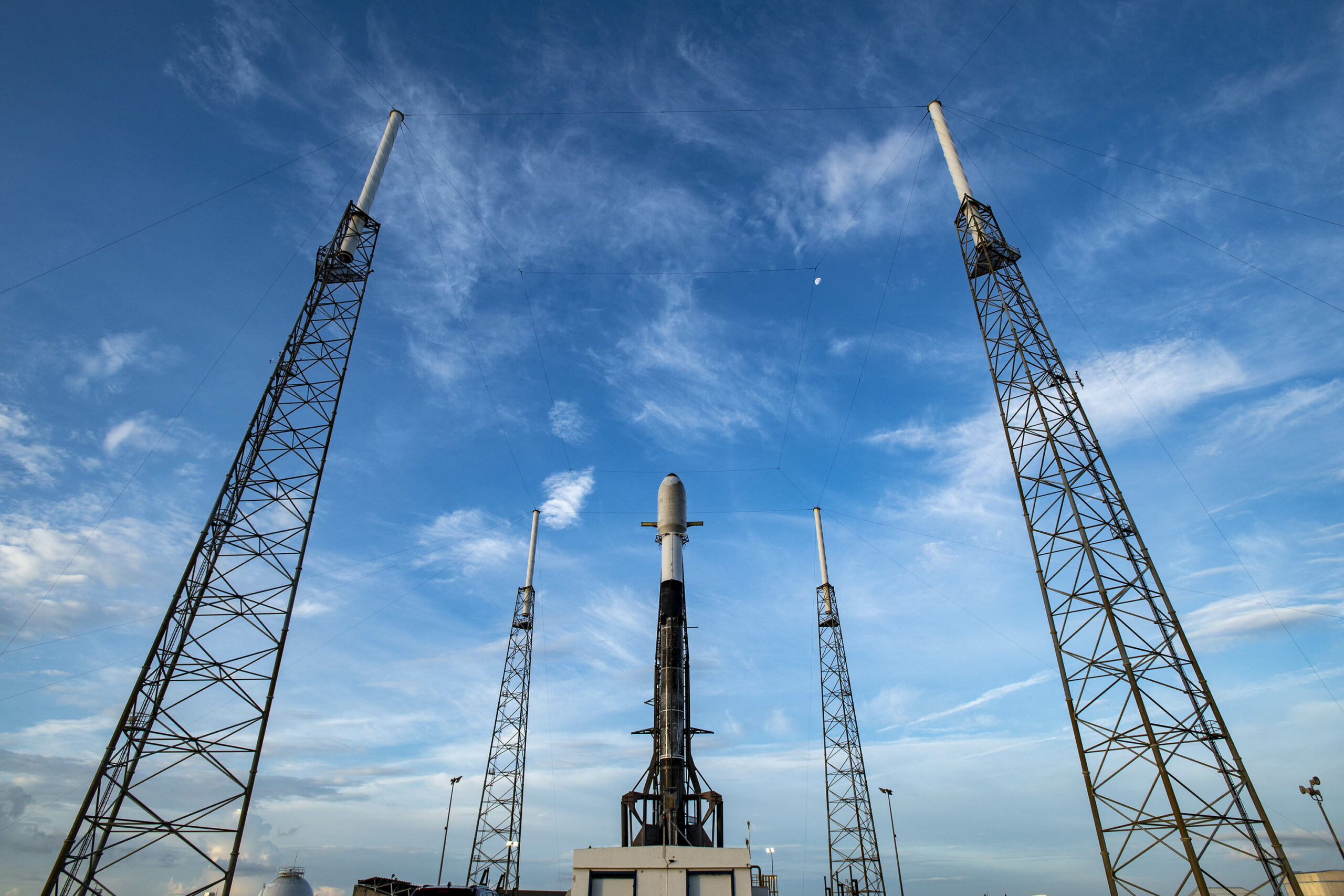

LEA-X5: New Movie on the completion of the European 5m X-band LDRS
Juli 2021
Gladly we announce with a new 20-minutes-movie the completion of the H2020-development „LEA-X5“, the 5m class European Large Deployable Reflector Subsystem (LDRS) operating in X-band.
The film itself is of course showing recent environmental and deployment tests, but it is mainly about PEOPLE, who are space engineers and space enthusiasts, and what they can achieve with combined powers and brains. These people, together with the enablers European Commission and European Space Agency, are making the achievement of „European Non-dependance“ happen.
LEA-X5 is a full LDRS-Subsystem (lead by HPS, Germany) and comprises the
- 5m diameter X-band reflector assembly (lead by LSS, Germany)
- the 5m long deployable arm assembly (lead by HPS, Germany),
- hinges & HDRMs (RUAG, DE),
- deployment electronics (vH&S, DE),
- thermal hardware (HPS/FHP).
Further partners of the H2020-consortium have been: INVENT (DE), FHP (PT), INEGI (PT), TICRA (DK), LUMA (SW), HPTEX (DE), ARQUIMEA(SP), HPS (RO), ETAMAX (DE), WSS (DE), ONERA (FR), TAS (FR), OHB (DE), Airbus (DE).
Most of the consortium members are introduced in the movie, inluding many interviews.
Take your time and enjoy the spirit of doing big things: LEA-X5 – European 5m X-band LDRS Completed (Final Report 06/2021) – YouTube
Best regards,
Your WeLEA-Consortium
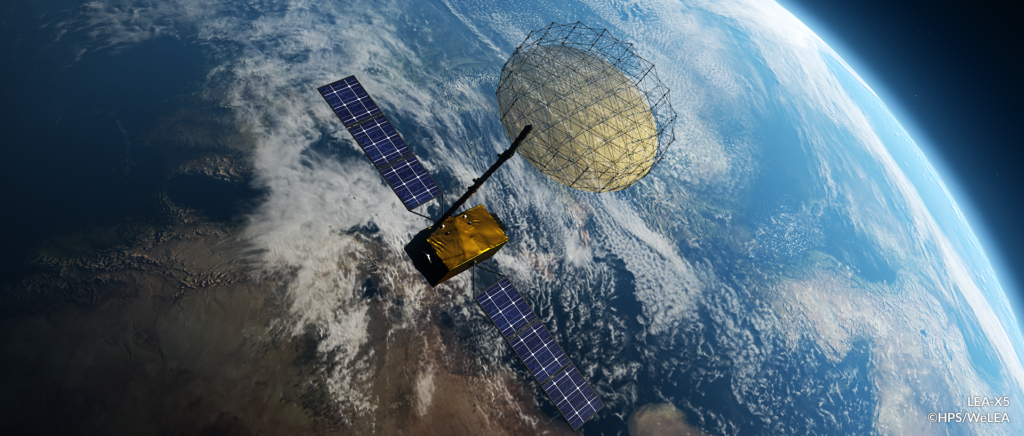
EUCLID: ESA-Project to Search for Dark Matter and Energy takes Crucial Step
December 2017
HPS Germany receives STM-acceptance for first model of the central antenna unit
European HPS-Group first Enterprise to Receive EN 9100:2016-Certification
July 2016
Quality first beyond borders
Letterheads, websites, publications: The claim of the midsize European space company is everywhere: „HPS – The Team to Trust“. Since June 27th now, this claim is even officially backed by the award of the first certification according to the strict rules of the brandnew „DIN EN 9100:2016 Aviation, Space, and Defence Quality Management Services.“ Not only that HPS, headquartered in Munich, is the first company ever in Germany to receive this high ranking confirmation – it is also a breakthrough for the whole group, because the certificate covers all of its three European group members, in Germany, in Porto (Portugal) as well as in Bucharest (Romania).
The certification was performed by the certification body AirCert GmbH, based in Ottobrunn near Munich (www.aircert.org), operating all over Europe and even overseas and in the far East. AirCert has specialized for the high end aerospace business and consequently made a big effort to be one of the very first entities in Germany to become authorized by international authorities for the new EN9100:2016 standard.
While the certification audit took seven working days to clearly review that the space group guarantees the same highest possible quality-management at all sites beyond borders, the preparations for this next great step after the certification of HPS in Germany and Portugal according to the 2008-rules of ISO 9001 took more than one year and an investment well above 100,000 Euros. The new EN9100 certification rules are by far more detailed and specific about the specification of core processes, traceability of supply chains and working processes, strict in the area of management processes and explicit about the requirements on key performance indicators, facilities, tools, and equipment as well as on awareness and compliance – the latter bearing the undeniable proof that the European space business world can serve as a shining example of sharing the same values when it comes to serving the customers with quality first.
„HPS- The Team to Trust“ – rarely has a space company´s communication claim been more seriously substantiated.
VIP-Delegation Visit to HPS
October 2015
On September 30th, HPS welcomed a VVIP-delegation of German and Bavarian space policy at its HQ-premises in Munich. Dr. Gerd Gruppe, head of space management and member of the executive board of DLR was accompanied by DLR´s head of SME-policy, Uwe Soltau, and Bernd Buchenberger, Senior Manager space and aerospace at the Bavarian ministry of economy.
Munich as well as Berlin pay special attention to the sector of space-SME, since SME are expected to serve as pacemakers in the first front of technological innovation. In this respect, space-tech expert HPS is especially in focus, since the company is the only German SME with a subsidiary in Europe representing today the long vacant position of the „M“ in space-SME. In addition, its managing director and owner Dr. Ernst Pfeiffer acts towards politics and business as spokesman of all German space SME organized in the AKRK-Committee.
Accordingly, the delegation was especially interested in the company´s new ready-to-market products – innovations which play a vital role in the German space agency´s new „component initiative“ – as well as in first hand information about important aspects of international cooperation like between HPS Germany and its subsidiary HPS Lda., Portugal.
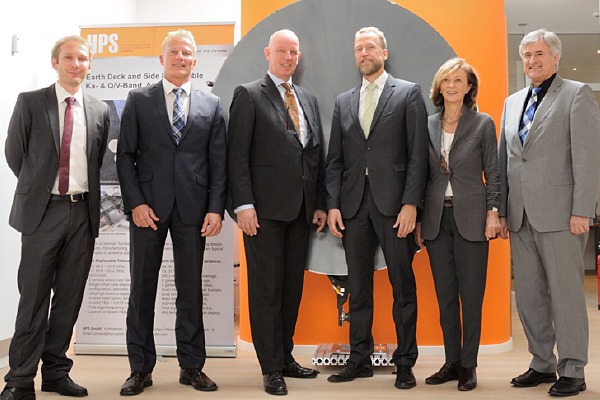
Dr. Gruppe personally pushes the German „component initiative“ with high priority in the firm belief that the German space industry urgently needs to define its own answers to challenges arising from the advent of completely new players like Google on the hitherto „closed shop market“ of space technology. According to Gruppe, „components“ form the central element: small, serially produced, very cost effective, and innovative units which more than ever before allow space to become an integrative and pacemaking part of daily life in business and society.
Together with HPS shareholder Sigrid Klett, former co-owner of the Munich based space company Kayser-Threde, Ernst Pfeiffer introduced the latest HPS-developments, like
- the rapid deployable ground antenna URDA for high-rate data transmissions; the antenna can be carried and operated even offroad by just one person
- an innovation with highest potential for serial production with a spectrum of target customers ranging from TV-correspondents to civil safety and military security personnel
- the Ka-band Dual Gridded Reflector developed by HPS for very stringent mass requirements
- the Q/V-band Feeder Link Top Deck Antenna as a component of future telecom satellites
- the 1.6-m antenna reflector for Ka- and Q/V-band applications – an innovation supported by DLR
- gold plated tungston meshes for large deployable antennas, developed in cooperation with companies and universities in the Bavarian „textile triangle“
- the HPS-development of serially manufactured electronic boxes based on CFRP.
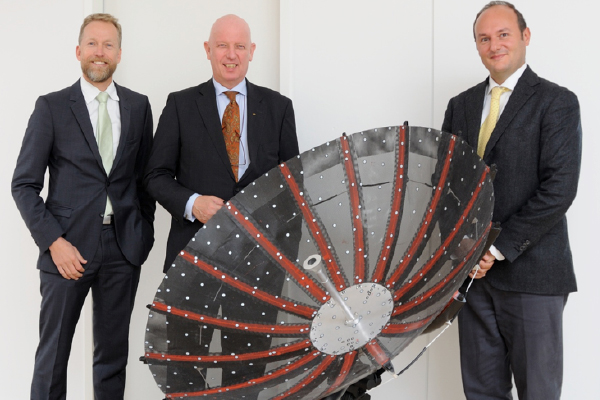
Peter Rauhut, CFO and also co-owner of HPS finally presented the full picture of the business situation of the enterprise growing at high speed since its foundation 15 years ago. In particular, he outlined the enormously positive growth impulses generated by the successful MLI-production of the Portugese subsidiary.
Ernst Pfeiffer outlined the importance of combining a top-quality serial production in Portugal at prices unparalleled with continuous development of new products in Germany in order to win and keep the support of banks accompanying the company´s growth even at fast pace. He also stressed the fact that the obviously strong support by politics in Bavaria and Berlin serves as yet another important cornerstone of trust towards HPS in the financial sector. There is enough room for yet further growth through innovations that lead to serially manufactured products, as an example Pfeiffer hinted at a soon upcoming development of GTO-satellite antennas for the transmission of Galileo-data.
Impressed by the dynamics, the technology and the company culture at HPS the delegation agreed to arrange for successive meetings on yet more detailled subjects in the near future.
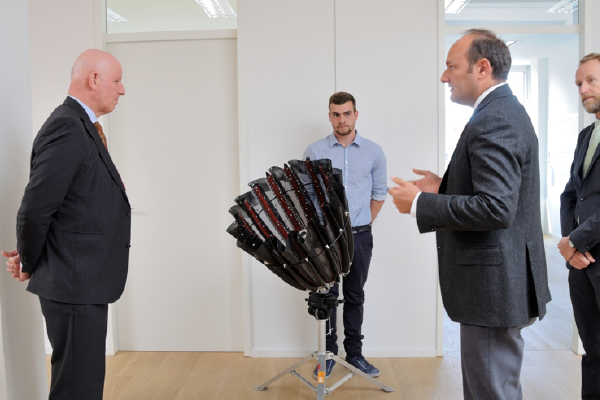
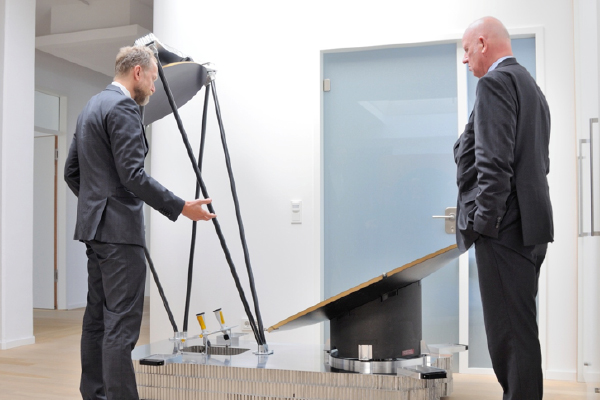
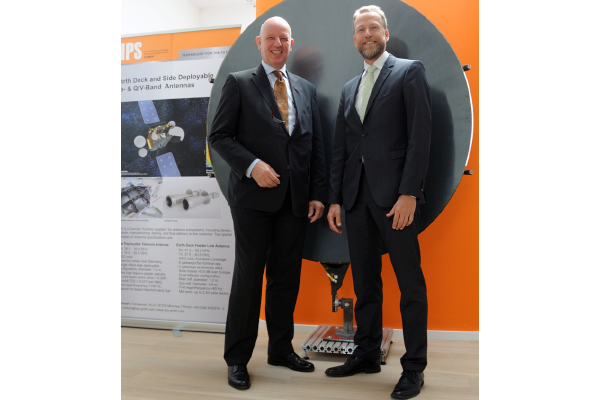
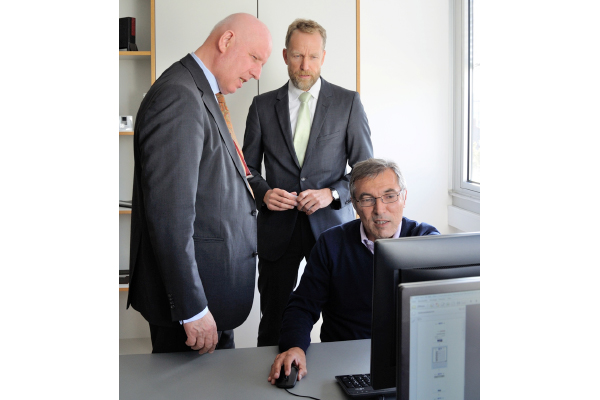
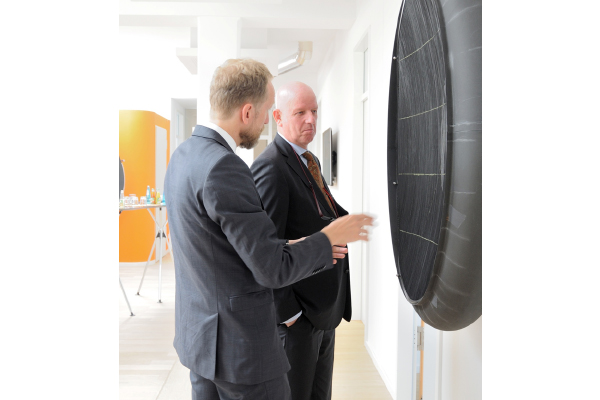
Test of LEA´s arm a full success
March 2021
Europe´s innovative deployable antenna technology takes the next hurdle
With the successful test of the Deployable Assembly Arm (DAA), which connects a Deployable Reflector Assembly (DRA) to the satellite, just completed at INEGI, the European LEA consortium led by HPS has cleared the next hurdle in the technical realization of Europe’s new antenna technology.
The 5m long DAA consists of 3 hinge mechanisms and 2 HDRMs (both by RUAG Space Germany), Release Mechanisms (by Arquimea, Spain), three CFRP tube segments (by INVENT, Germany), Metal Fittings (partly by HPS Romania), Deployment Control Electronics & EGSE (by von Hoerner & Sulger). Focus of the tests have been the verification of a) the functional full deployment (which takes in total 25 min.), b) a high pointing accuracy of the arm and c) the verification of the mathematical thermo-elastic models.
INEGI (Portugal) is the main partner for the arm deployment test and a good partner of HPS for over 13 years now. INEGI was responsible for the 0-g-simulation Test Stand and the Thermo-elastic Distortion Test Stand. Despite the pandemic and all restrictions the teams could manage this progress with highest motivation and closest possible contact between the INEGI/HPS team on-site in Porto and the HPS-engineers in Germany. HPS is responsible for the DAA and also for the implementation management of the whole LEA-activity. The total LEA-team encompasses 15 partners from 7 countries; the program started in the framework of H2020 in November 2017. The arm deployment test and the TED-test (thermo-elastic distortion) was one of the last tests of this H2020 activity.
The next step – starting still in March – is the environmental test (vibration and thermal vacuum) of the full LDR-Subsystem (Reflector, Arm and HDRM, all connected), which will be performed at INTA in Madrid, Spain.
“LEA-X5” (5m reflector diameter, 5m arm length, X-band application for Earth Observation and Telecommunications) is meanwhile seen as one of the precursing technology developments for the current Copernicus CIMR Mission.

Manfred Krischke and Peter Müller-Brühl take over still available minority shares
March 2021
Renowned tech and space entrepreneurs join HPS Munich
It was sealed with a short signature ceremony on March 17, 2021: Manfred Krischke and Peter Müller-Brühl are now co-partners of the leading German space company HPS GmbH, Munich.
Last year, the specialist for technically sophisticated and innovative mechanical-, thermal-, and antenna-subsystems prevailed against all competition as the consortium leader of a group of fifteen space companies from seven countries, and with the order for the development and production of a self-deploying 8 meter arm- and reflector-subsystem for earth observation, the 100 Million Euro limit broken for a single project.

In addition, the company is, under the management of the main managing partner Dr. Ernst K. Pfeiffer, in a worldwide race to develop an automatic return system (so-called de-orbiting) for disused satellites and rocket parts; options for the self-deploying decelerating sail ADEO in various sizes are already being accepted from all over the world. And finally, HPS Munich, just like the subsidiary in Romania, is well positioned in conventional business with project orders from the areas of telecommunications, space exploration, earth observation and security, despite all the adversities of the corona situation. HPS remains in the possession of German space enthusiasts: in addition to the new investors and main shareholder CEO Pfeiffer, the HPS group of shareholders also includes a private investor and four senior employees. In addition, there is a small participation by another space SME.
“This mixture of ‘New Space’ and conventional ESA, DLR and EU business is a solid basis for long-term sustainable business success”, Krischke is certain: “At HPS, courageous innovative genius and many years of experience come together for what is feasible. That is the formula for success of HPS. “Peter Müller-Brühl sees great opportunities in the potential of HPS: “Similar to Clean-Energy, Clean-Green-Space will very soon also become a global socio-political demand in view of the tens of thousands of planned satellites space debris is already an important topic for many people. With the deorbiting solution from HPS, we will bring sustainability to the space industry”.
Last but not least, these prospects are reflected in the company’s value. HPS does not give exact figures, however, HPS CEO Pfeiffer notes: “We see it as a great honor that Messrs. Müller-Brühl and Krischke, as experienced space entrepreneurs, decided to engage themselves in HPS, especially because of the high potential for increased value recognize via the NewSapce or commercial space line from HPS that we – I am sure – will lift very quickly together with our new members of the ‘HPS family’.”
Indeed, Krischke and Müller-Brühl are highly experienced high-tech and space managers – Kayser Threde, RapidEye, Daimler, GreenCom Networks are just a few key words from their professional careers. What they have in common is the founding of Cloudeo AG as the largest independent platform for satellite-based geodata and applications. In addition, both are active as members of the supervisory board of Mynaric AG, the world’s leading technology provider for satellite-based telecommunications via laser, another “Shooting Star” in the German space sky.
European Premiere
March 2021
Arm and Reflector of LEA-X5 Successfully Mated to Form Complete Subsystem
Fifteen companies – mostly SMEs – from seven countries and one goal: a deployable 5-meter X-band-antenna as a preliminary development for the CIMR project, developed under the European H2020 program (2017-2021). For the first time ever, such a complete subsystem (HPS) has now been successfully assembled in Europe from the reflector- (LSS) and arm- (HPS) assemblies. Previously, the test deployment of the arm and reflector – each individually – had already been successfully passed.
LEA-X5-Subsystem is now at the premises of the consortium´s highly reliable test partner INTA in Spain, where vibration tests for the subsystem are on the agenda in the presence of the LSS- and HPS-teams. In a third round of testing, the subsystem will have to prove itself capable of withstanding the conditions of the thermal chamber.
The next complete subsystem-hardware in this context – the CIMR LDRS-EQM – will be assembled end 2023.
With the key technology behind LEA-X5, the continent is decisively expanding its independence from non-European sources.
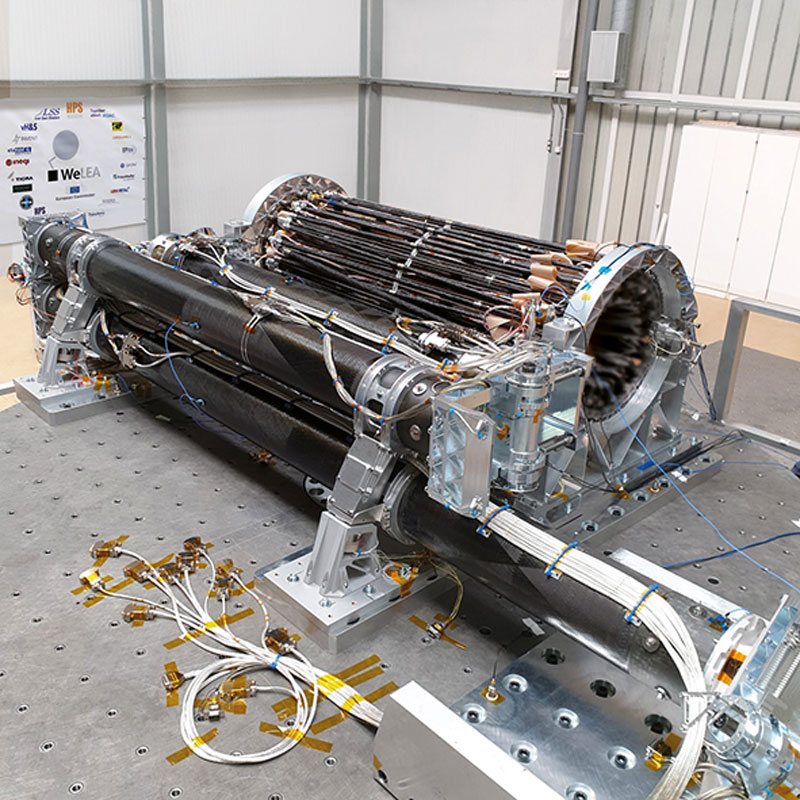
HPS being awarded the Q/V band antenna project FLANT
February 2012
The objective of the project is to develop a high-performance Q/V-band Earth deck antenna for broadband feeder link application. The baseline antenna will be designed and analyzed at RF, mechanical and thermal levels, supported by critical bread boarding when necessary. An Engineering Model of the selected antenna will be manufactured and tested.
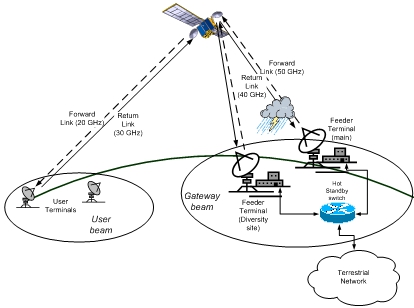
HPS at German Congress on Satellite Communications
March/April 2012
HPS was attendee, exhibitor and held speeches on the German national conference about satellite communications. The topics of the HPS speeches were:
- Q-V-Band applications
- Q-V-Band antenna structures
- High Tech and latest technology for Ka-band antennas and reflectors.
- The shown model is our full CFRP STANT antenna (environmentally tested and RF tested in Ka-/Q-/V-band).
More information on the congress can be found on the DLR homepage.
